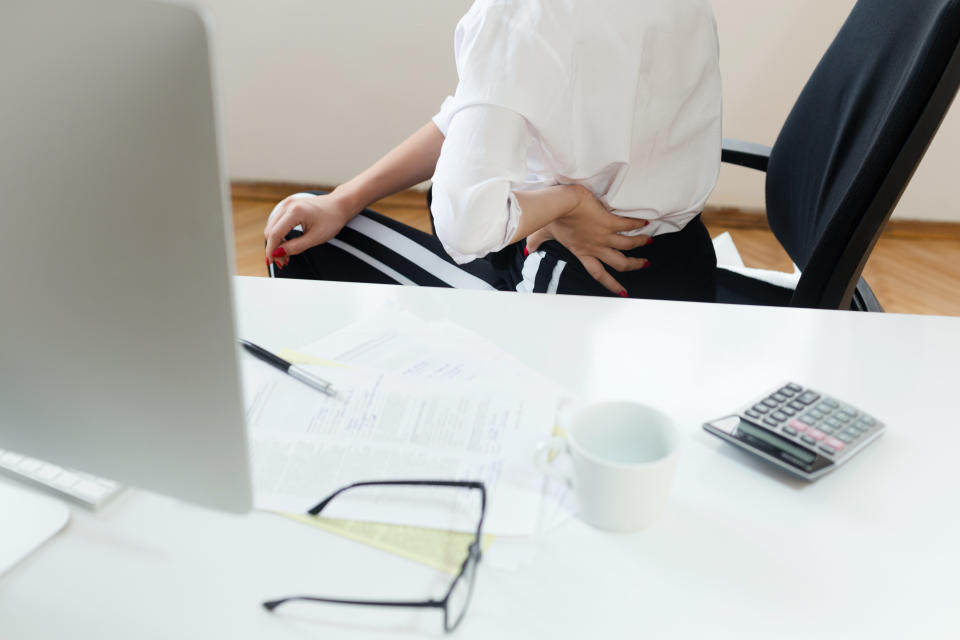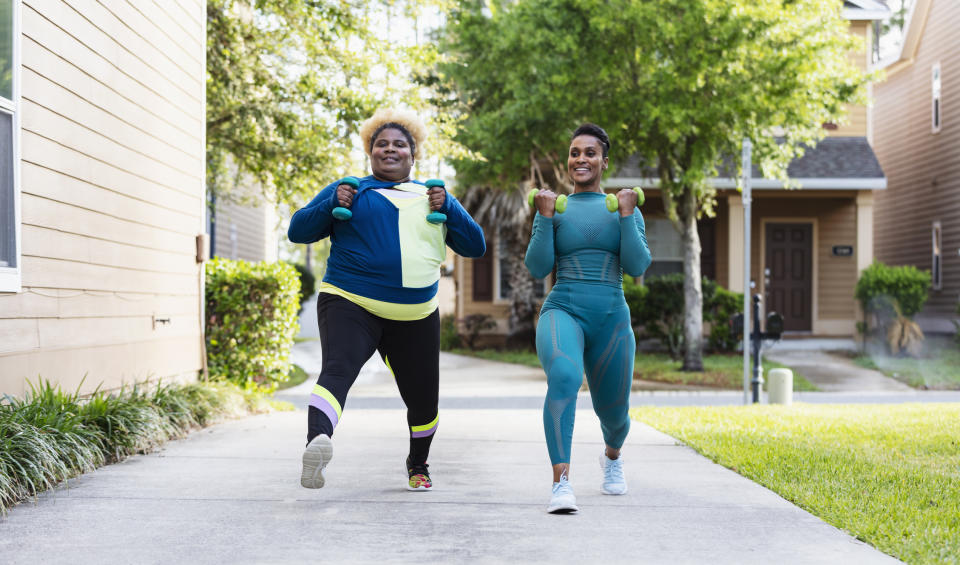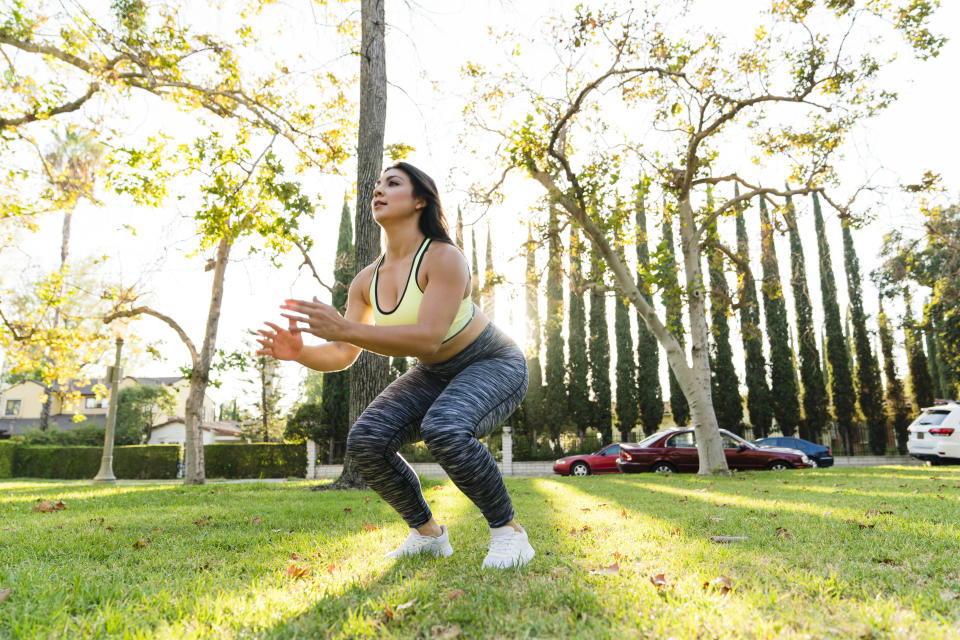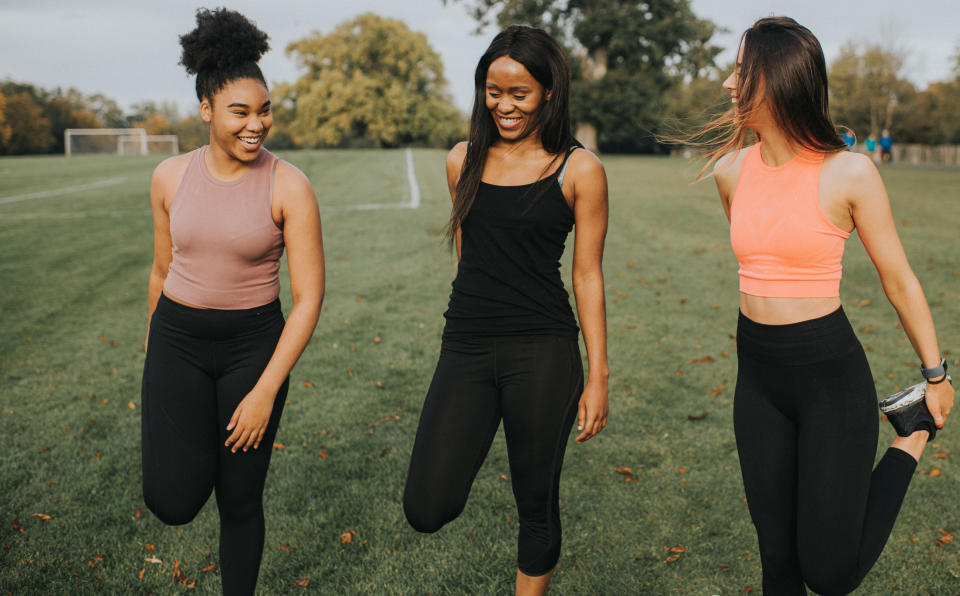The perils of prolonged sitting have been well, established. It can boost your chances of developing everything from heart disease to cancer and diabetes, and can even take years off your life. But there’s one side effect that you may not have realized is linked to parking your tush in a desk chair all day.
Americans are sitting so long that their butts are literally falling asleep. “Dead butt syndrome,” or gluteal amnesia, is a condition that occurs when your gluteus medius gets inflamed and forgets to function normally.
“Sitting too long can restrict the blood flow, causing gluteal amnesia, which can lead to hip pain, lower backache, and problems with your ankles. The glutes will fail to fire properly even when performing exercises targeting the glutes,” said Donovan Green, celebrity fitness trainer and author of No Excuses Fitness: The 30-Day Plan to Tone Your Body and Supercharge Your Health.
Kelly Starrett, a physical therapist and founder of Stand Up Kids, added that your glutes aren’t designed to bear weight for long periods. Spending so much time on your backside decreases your body’s ability to use your incredibly powerful gluteus muscles when they’re needed.
“If you imagine making a panini sandwich where you take high pressure and high temperature and make a grilled cheese, sitting on your glutes all day is a little like this,” Starrett said.
“The sustained flexed position of the hip and the compression of the tissues sets us up for the perfect storm of shut[ting] down glute function, or in the vernacular of the people, ‘dead butt,’” he added.
People experiencing dead butt syndrome may feel the familiar sensation of a body part “falling asleep.”
“The technical term for this is ‘paresthesia,’ an abnormal sensation felt in your body due to compression or irritation of nerves,” said Mark Benden, director of the Ergonomics Center at Texas A&M University. He added that symptoms of paresthesia might vary from mild to severe and can be fleeting or long-lasting.
How To Know If You’re Developing The Condition

The primary source of the condition is inactivity, so if you’re plopped in your desk chair for hours on end each day, chances are you’re increasing your risk.
“Sitting for extended periods of time has been shown in multiple studies to have a major impact on how well we can contract and use our glutes effectively,” Green said.
He noted that when your glutes shut down due to lack of activity and stimulus, it causes strain on other muscles and joints and produces an effect where weaker muscles have to do the job of the stronger gluteus maximus. Left untreated, this can lead to something called “synergistic dominance,” where the smaller helper muscles of the hip and leg are now taking over movement and controlling the forces loaded on the hips, spine and low back.
Muscle tightness in the hips is also a major culprit of dead butt syndrome. If you don’t have proper flexibility, you are “literally squeezing the juice or ‘power’ out of the gluteus maximus because movement is so challenged that the [gluteus maximus] can’t access enough force to engage fully,” Green said. “Remember, the gluteus maximus is the big guy and needs lots of range of motion to activate and do its job the way it was intended to.”
Choosing the wrong exercises or not executing them properly can also contribute to the condition.
“When trying to activate glutes … we often see trainers and fitness buffs repping out exercises that don’t make the gluteus maximus any more responsive than before,” Green said.
He added that when an exercise fails to activate the targeted muscle, those smaller muscles mentioned earlier end up taking over the movement. This makes those smaller muscles become stronger, further robbing the gluteus maximus of the stimulus it’s now starved for.
“For instance, say you’ve been sitting around your office for the last eight hours and now want to hit the gym for some serious deadlifting and squatting,” Green said. “You load up the bar and pound out set after set, trying to squeeze the gluteus maximus for everything its worth, but, instead of sore glutes the next day, you have a tight lower back, tight hamstrings and sore quads.”
Green revealed that injuries and arthritic conditions could also shut down muscle activation as a way to “protect” a joint from further damage by immobilizing the damaged joint or bone.
How To Ward Off ‘Dead Butt’


According to Jeff Bell, co-founder and master trainer of Belleon Body NYC, “the gluteus maximus was built for power and speed and needs to be fed a regular diet of climbing, squatting, running, lunging and walking if it is to be kept in peak condition, or at least appear in top shape.”
The best way to prevent dead butt syndrome is to keep yourself active and healthy. If you sit for prolonged periods of time, Bell recommends taking frequent breaks to stand up, stretch and walk around as a means of keeping the posterior muscles active throughout the day.
“A good rule to remember is for every hour of sitting, you need to take 10 minutes of standing and moving around to reactivate and keep those butt muscles from falling asleep,” he said.
Stretching before and after exercising is also key to avoiding gluteal amnesia, especially for distance runners and cyclists who need to pay special attention to stretching their hip flexors, said chiropractor Lily Friedman.
“This will allow the gluteus medius, one of three gluteus muscles, to strengthen properly and thereby negating the reciprocal inhibition,” she said.


According to Green, performing regular exercises that target the three glute-related muscles can reverse dead butt syndrome. Here are his five moves to activate the glutes:
-
Wide stance jump squat: Stand with your feet a bit wider than shoulder width apart. Squat down to a 90-degree angle. Use your glutes and quads to jump as high as you can, landing softly back into your squatted position.
-
Side steps with bands: Grab an exercise band and strap it on the upper part of your ankles. Bend your knees and start walking sideways to the left for 10 steps and repeat in the other direction. This will strengthen your gluteus medius and minimus while activating the major part of your glutes as well, according to Green.
-
Side lunge: This is a great lower body exercise that strengthens your quads, glutes and hamstrings while also targeting both the inner and outer thighs. Stand with your feet together, then step out as wide as you can to the left while bending the left knee to 90 degrees. Keep the right leg straight. Repeat on the other side.
-
Kettlebell squat: Grab a kettlebell by the handles and bring it up in front of your chest and keep your elbows tight to your body. Set your feet in a squat stance so that the heels are at hip width or slightly wider. To squat, sit the hips down over the heels, bringing your body down to 90 degrees or more. As you descend, be sure to support the weight so that it stays above your chest line to protect your lower back from strain.
-
Lateral step up: Find a steady surface that is strong enough to hold your weight and is at least as high as your knees. Stand with your body facing sideways toward the object. Place your right foot on the surface and use your glutes, quads and core to step up. Repeat 10 times before going to the other side.
For a bonus maneuver, Green said clinching your butt muscles occasionally throughout the day might help. “This will fire up those glutes and get them back to moving again,” he added.


There are also products on the market that can aid in helping your butt to refrain from falling asleep that can work wonders if you sit for too long. There are seat cushions, for instance, that are specially designed to relax under pressure while evenly supporting your weight.
The bottom line when it comes to tackling dead butt syndrome, according to Starrett, is that if you start to feel the tingle you should get up and get moving.
“A quick walk up some stairs or a brisk walk [in general] will get your gluteals back into function mode,” Starrett said.
This article originally appeared on HuffPost.
Source Agencies


